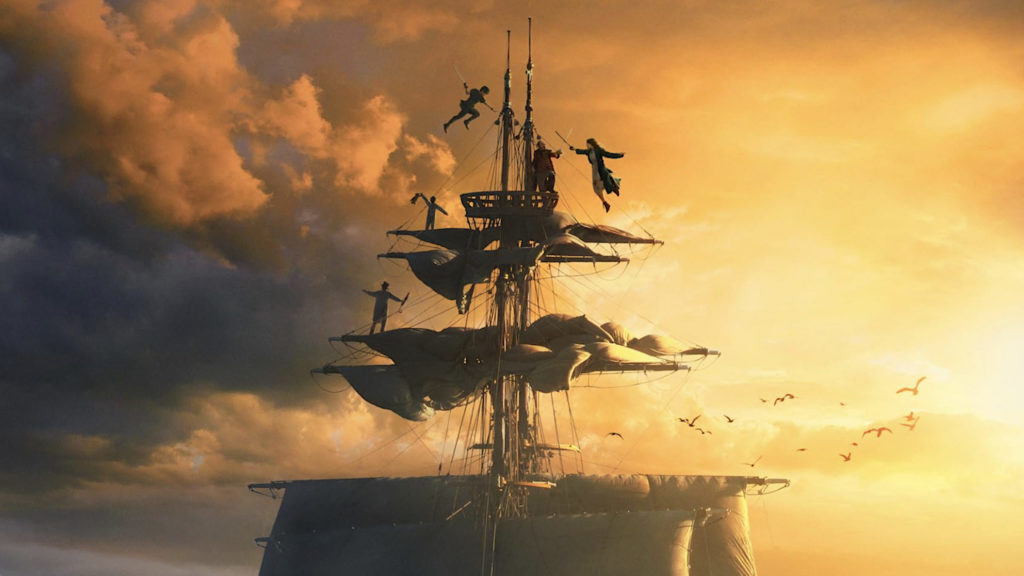There’s a moment in all of our childhoods when we stop daydreaming about running away from home and start wishing we didn’t have to. J.M. Barrie’s 1911 novel, “Peter and Wendy,” is about that last moment, in all its bittersweetness. Buoyed by pixie dust and camaraderie, Wendy Darling meets the figures of her imagination: pirates and Indians, mermaids and fairies. Yet Faerie is a world of deceptive pleasures. Free of responsibility, it is therefore free of home, of family, of time. It’s a wise myth.
David Lowery’s Disney+ film “Peter Pan & Wendy” is not so wise, partly because it removes gender distinctives. There’s no sense that the eponymous pair will play father and mother to the gang of motley lost boys (some of whom are girls, all of whom are indistinguishable).
Ross Douthat wrote recently about how wrongheaded it is to think Barbie and Ken don’t need each other, and that self-defined isolation is a bad definition of being grown up. Yet in this story, egalitarian Wendy muses that she probably doesn’t want children, and her mother assures her that her value lies in her leadership, not her future motherhood.
Peter’s cardinal sin is not that he is immature and heartless, but that he conceals a grown-up’s cunning and bitterness beneath a boy’s face. Between Wendy’s rebellious dreams of professional achievement and Peter’s cynical secretiveness, we get a watered-down vision of both adulthood and childhood.
Presumably, those involved in the new film see these changes as deconstructing the colonialist ethos of the Edwardian story. But Barrie, like Charles Dickens, loved skewering authority figures. Consider Mr. Darling’s anxiety about their Newfoundland dog, Nana. He “had sometimes a feeling that she did not admire him.”
The line is exquisite in its comic simplicity. In its understatement, it makes him rather pitiable and lovable, despite his flaws. Captain Hook, who went to a prominent public school, is obsessed with good form and at one point his paranoia causes him to be jealous of Smee: “Had the bo’sun good form without knowing it, which is the best form of all?”
Such satiric deftness is beyond the ability of films assembled by corporate committees. Despite whatever flaws imposed on him by Disney, Lowery himself, as illustrated by his recent adaptation of “The Green Knight,” so distinct from his fantastic 2016 tale of whimsy, “Pete’s Dragon,” seems to feel he’s too old for fairytales. In “Peter Pan & Wendy,” there is no sense of wonder or surprise, no yearning, no mystery.
The audience’s knowledge of the material is assumed to such a degree that the story races past plot points — like learning to fly, why Peter’s shadow is in the children’s drawer, why a crocodile ticks like a clock, etc. — to spend long monologues trying to piece together Captain Hook’s childhood trauma. “The body keeps the score, Cap’n!” I interjected during one of these moments.

Wonder is in short supply at the movies these days. For transcendence, we have substituted political awakening. For innocence, we have substituted sentimentality; and for awe, we have substituted convincingness. In such a world, it’s impossible to understand fairytales, the most whimsical and unrealistic of forms. More foolish than our ancestors, we rip away the veils of metaphor, fancying that we have uncloaked the real thing, when in fact we lose something vital in the unmasking. Photo-realistic lions just don’t convey the same emotion when reenacting Shakespearian drama.
Consider the great cinematic poet of wonder. Steven Spielberg’s last great foray into the land of whimsy was in “A.I.: Artificial Intelligence,” a patchwork film of deep imagination and feeling that digs itself a philosophical hole it doesn’t begin to have the tools to escape from. Spielberg asked the right questions in this “Pinocchio”-esque tale: What makes us human? What makes humanity valuable? What do we owe to those we create? What do we owe to those under our power? Are we simply fleshy machines constructed by unfeeling deities?
Again, through the lens of story, Spielberg’s emotions led him in the right direction. Human value lies in our uniqueness, the imprint of something greater than us, to which we flee for love. In order to be reconciled with these higher beings, we must be made more like them — made more real than we are.
Yet here we run into early 2000s Spielberg, feeling he’d outgrown fairytales. The higher beings are alien robots, memories trapped in glass, phantom resurrections which do the exact same thing that AI toys do: lie to us that we are loved. Much like “Interstellar,” it becomes an ouroboros fairytale of the protagonist’s own making, what C.S. Lewis as a young atheist called “lies breathed through silver.” There is no God in the Ark, no bridge of faith, no father to catch us and call us by our name. Just crystal skulls and data.
No wonder Spielberg backed away from the edge. He’s dismissed the big questions now for the little ones: What are the policy problems that lead to youth delinquency? Why did my parents get divorced? I’m exaggerating, of course. “West Side Story” and “The Fablemans” are neatly crafted, but their seemingly adult concerns mask the fact that Spielberg’s early work delved even deeper than drama, to the realm of myth.
His new work is more simplistic and pat, polished and careful. The only moment in “The Fabelmans” where it veers into the realm of the bizarre and unexpected is with the arrival of a figure larger than life, the greatest American mythmaker: John Ford. Who knows what he’ll do next? An alternate version of the film features Ford climbing into a biplane and heading off to Monument Valley with Sammy in tow. Ford could have directed a pretty good version of “Peter Pan,” I bet.
We have accepted Spielberg’s conclusions, and stopped asking his questions. But maybe one day we’ll grow “old enough to start reading fairy tales again.” At least, we might do if we rewatch “Peter Pan.” The 2003 version.

